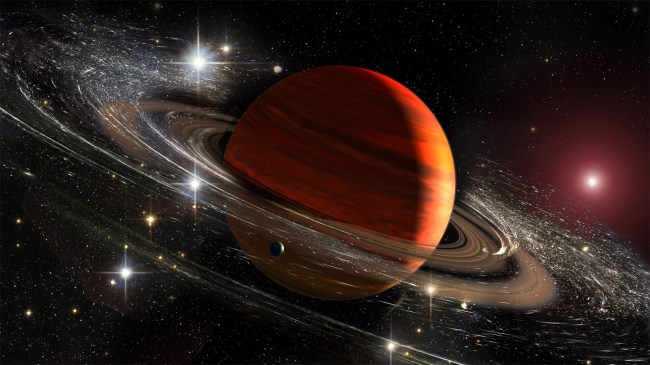iStockphoto
Scientists believe Saturn’s largest moon, Titan, could be one of humanity’s best bets to find some form of extraterrestrial life due to it being the only other place besides Earth to have an atmosphere and to have had rivers, lakes and seas on its surface.
In recently published research, scientists at the University of Hawaii at Manoa’s School of Ocean and Earth Science and Technology explain how the liquids on Titan being made of hydrocarbons like methane and ethane, and the surface being made of solid ice, could mean methane gas may also be trapped within the ice.
They believe, based on their research, that the icy crust on Saturn’s moon, which they believe is up to six miles thick, may have trapped methane gas in a warmer interior which warms the ice from the inside, explaining the moon’s methane-rich atmosphere.
It also may explain why impact craters on Titan are smaller and appear less frequently than those on Earth’s moon.
“Titan’s impact craters are hundreds of meters shallower than expected, compared to similar-sized craters on Ganymede,” the scientists wrote. “Only 90 crater candidates have been identified, the majority of which have low certainty of an impact origin. Many processes have been suggested to shallow, modify, and remove Titan’s craters, including fluvial erosion by liquid from rainfall, aeolian sand infill, and topographic relaxation induced by insulating sand infill. Here we propose an additional mechanism: topographic relaxation due to an insulating methane clathrate crustal layer in Titan’s upper ice shell.”
“This was very surprising because, based on other moons, we expect to see many more impact craters on the surface and craters that are much deeper than what we observe on Titan,” said the study’s lead author Lauren Schurmeier. “We realized something unique to Titan must be making them become shallower and disappear relatively quickly.”
Schurmeier added, ““Titan is a natural laboratory to study how the greenhouse gas methane warms and cycles through the atmosphere. Earth’s methane clathrate hydrates, found in the permafrost of Siberia and below the arctic seafloor, are currently destabilizing and releasing methane. So, lessons from Titan can provide important insights into processes happening on Earth.”
Schurmeier and her team believe that the NASA Dragonfly mission to Titan that is scheduled to launch in July 2028 will allow researchers their best opportunity to make up-close observations and investigate the surface of Titan even further.
“If life exists in Titan’s ocean under the thick ice shell, any signs of life (biomarkers) would need to be transported up Titan’s ice shell to where we could more easily access or view them with future missions,” Schurmeier said. “This is more likely to occur if Titan’s ice shell is warm and convecting.”

